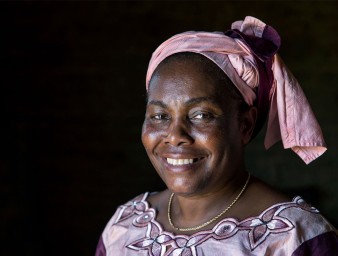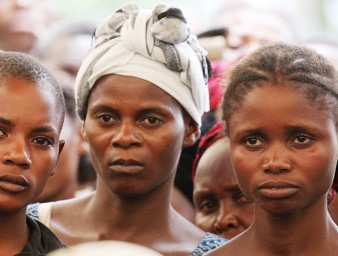Forensic investigators bring DR Congo victims closer to justice
04 November 2022
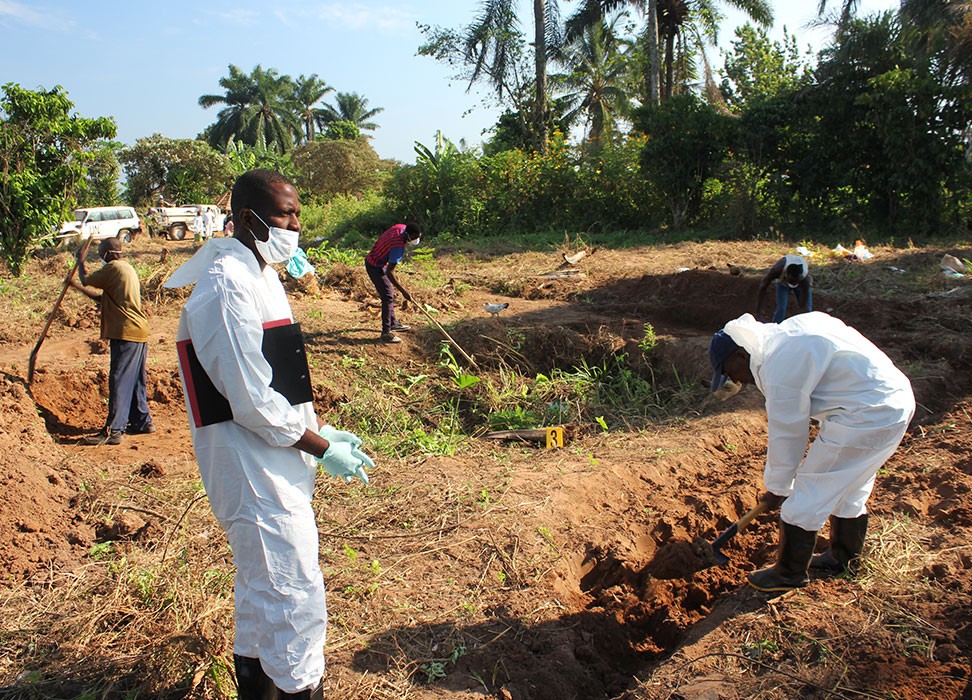
The splatter on the walls painted a gruesome picture.
“It is blood,” said Lieutenant-Colonel Michel Ngalamulume Kadugu, Chief Judicial Inspector of the Senior Military Prosecutor’s office (Auditorat Militaire Supérieur) of the former Kasai Occidental Province in the Democratic Republic of the Congo (DRC). “And here we can see bullet holes and heavy weaponry impacts.”
Lieutenant-Colonel Michel was on a field mission in Nganza, in the Kasai region of the DR Congo, with the UN Technical Assistance Team for the Kasai, to investigate a suspected mass grave. On the way, they made a halt at what was believed to be a traditional ritualistic initiation house, also known as ‘tshiota’ (meaning extended family in the local Tshiluba language).
Since the mandate of the technical assistance team was extended, the team has provided similar support to justice authorities on other emblematic cases in other provinces, including Kongo Central, South and North Kivu.
Additionally, the technical assistance team has been has been asked to help with other cases involving allegations of extrajudicial executions, torture, sexual and gender based violence as well as analysis of forensic evidence and physical, psychological and social impact.
A mandate to investigate serious human rights violations and abuses
In March 2017, the Human Rights Council expressed its concerns at the human rights crisis in the Greater Kasai and the need to bring the perpetrators of serious human rights violations to justice. The violations committed in the region included massacres of civilians, who were buried in numerous mass graves. The UN documented at least 80 mass graves, for which there has been little accountability and that resulted in displacement of the population.
In June that same year, a Technical Assistance Team was set up by the Council and was deployed to Kananga, Kasai Central Province, with a specific mandate to provide assistance and advisory services to the military prosecutor of Kasai provinces. The team supported the military prosecutor’s investigations into allegations of serious violations and abuses committed in the province.
In October 2021, the team’s mandate was expanded to cover the entire national territory of the DRC. Currently a group of six forensic experts are based in Kinshasa (to deal with cases from the western area) and in Goma (to deal with cases from the eastern area). The team also includes an expert on sexual violence, an expert on witness and victim protection and a geographic information systems expert.This support is also being provided in the context of broader support being provided to the government by OHCHR in supporting national transitional justice initiatives.
“We have already been on two missions here. The first forensics team came here to take blood samples. At that time, it was still quite fresh," said Achille Tiem, former Coordinator of the Technical Assistance Team. Tiem is also in charge of the protection of victims and witnesses.
Exploring a potential mass grave
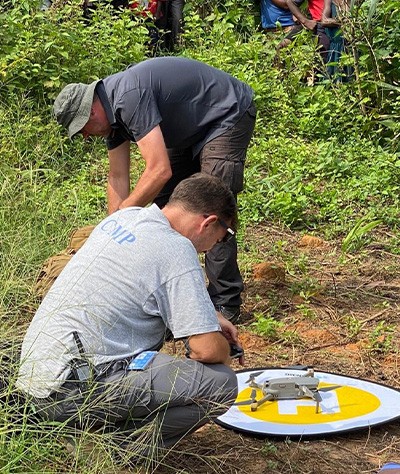
The Technical Assistance Team exploring a potential mass gravesite with drones in Nganza, Kananga, DR Congo, February 2020. © MONUSCO/UN Joint Human Rights Office
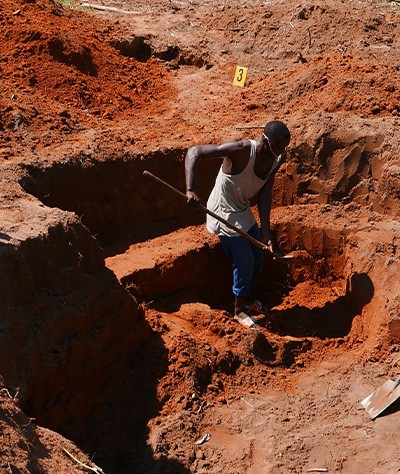
The Technical Assistance Team excavating a mass gravesite in TSHISUKU (Kazumba territory), Kasai Central province, DR Congo, June 2019. © MONUSCO/UN Joint Human Rights Office
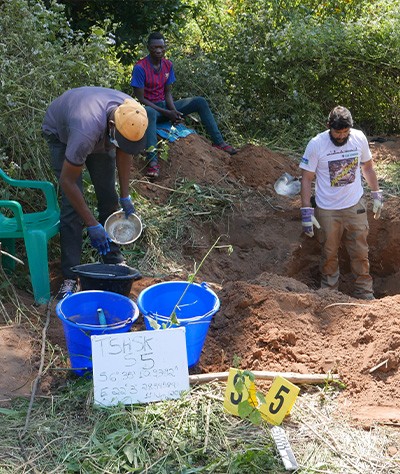
The Technical Assistance Team excavating a mass gravesite in TSHISUKU (Kazumba territory), Kasai Central province, DR Congo, June 2019. © MONUSCO/UN Joint Human Rights Office
The team had suspected that the ‘tshiota’ had been used as a place of detention and summary execution, but they had not pushed their investigations further. However, the military prosecutor wanted to come back to corroborate allegations made by returnees who had fled to neighbouring Angola during the massacres.
“We spent three months in the bush before we returned. The mayor of the city pleaded with those who had fled to return,” said one witness, who guided the team during their visit.
During one of its first visits to the village, the investigative team was made aware of a possible mass grave not far from the ‘tshiota’. Under the bamboo trees in a ravine, they had found two human skulls and during their latest visit, one of the witnesses of the massacre said that the Kamuina Nsapu militia had disposed of some of the bodies of their civilian victims in that ravine.
Years of anti-government conflict in the Kasai
The situation in the Kasai region deteriorated significantly during 2016 following a conflict over chieftaincy between the central Government of Kinshasa and supporters of the traditional leadership system. In April 2016, the refusal of the central authorities to recognize Jean-Pierre Mpandi – alias Kamuina Nsapu - as hereditary chief of the Bajila Kasanga chieftaincy in Kasai Central, and the decision to replace him with a Government-appointed chief, provoked an insurrection by Kamuina Nsapu.
Kamuina Nsapu had instructed other traditional rulers to join him in the revolt against all symbols of the State, and ordered that every village send him groups of young people to be initiated and trained to form a militia that would take actions aimed at destabilizing the Government.
The killing of Kamuina Nsapu on 12 August 2016 by soldiers of the Forces armées de la République Démocratique du Congo (FARDC) during operations against the insurgency marked a turning point in the crisis.
The UN Joint Human Rights Office (UNJHRO) in the DRC reported serious abuses by the Kamuina Nsapu militia in the context of the rebellion, as well as serious human rights violations by State agents, mainly FARDC soldiers, during operations against the militia. Since August 2016, the conflict has caused thousands of victims, including two UN experts who were summarily executed in Kasai Central while investigating the violations in March 2017.
Precision as an imperative
“We have to understand that people may not remember clearly the exact location of graves. In Tshisuku, for example, during our last intervention, many places where we dug turned out to be empty, but we later found bodies buried just three or four meters away,” added Pierre Perich, former Forensic Doctor in the Technical Assistance Team. “In addition, witness testimonies are often conflicting, and the incidents happened three years ago, minimum.”
At the beginning of the investigations, the context was particularly complex, today the technical assistance team have a better understanding of the various dynamics of the cultural and social process and the ways of understanding death.
The team managed to find the steep path that led them to their gruesome discovery. Looking at the terrain, Colonel Michel remarked that there must have been much heavy rain since his last visit. One of the witnesses ventured to say that the bodies may have been dug up and moved to another resting place. Perich stressed once more the importance of precision.
“We would like to see what is down there because we like to be exhaustive. The problem is the vegetation and time - the time that has passed,” Perich said.
“What we need to do is to try to explore and find out whether there are any remains because, in fact, this is not a burial site but rather a mass grave, a place where bodies were disposed of,” he added. “These bodies have quickly deteriorated because they were left outside, of course, and with the rain, the gullying, everything must have fallen to the bottom [of the ravine]. It would still be worth confirming all of that.”
Hope for DR Congo victims
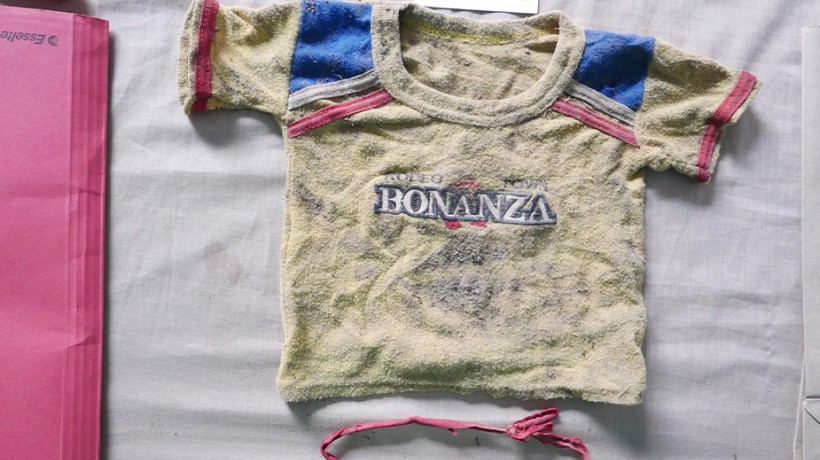
Evidence collected for forensic analysis: Belongings of the victims excavated from a mass gravesite by the Technical Assistance Team in Tshisuku (Kazumba territory), Kasai Central province, DR Congo, June 2019. © MONUSCO/UN Joint Human Rights Office
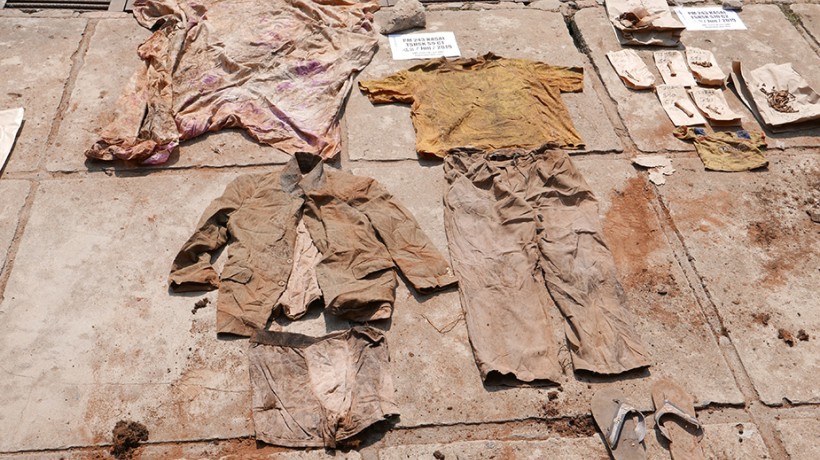
Evidence collected for forensic analysis: Belongings of the victims excavated from a mass gravesite by the Technical Assistance Team in Tshisuku (Kazumba territory), Kasai Central province, DR Congo, June 2019. © MONUSCO/UN Joint Human Rights Office
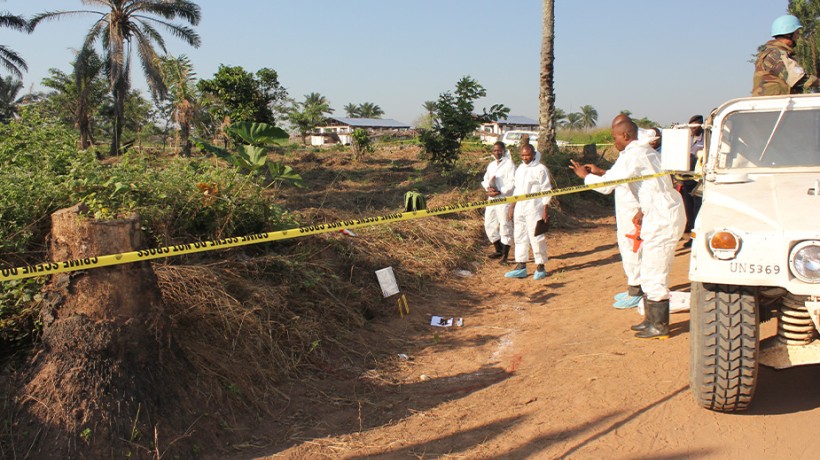
Investigators cordon off areas in Tshisuku to conduct forensic analyses and collect evidence, Kasai Central Province, DR Congo, June 2019. © MONUSCO/UN Joint Human Rights Office
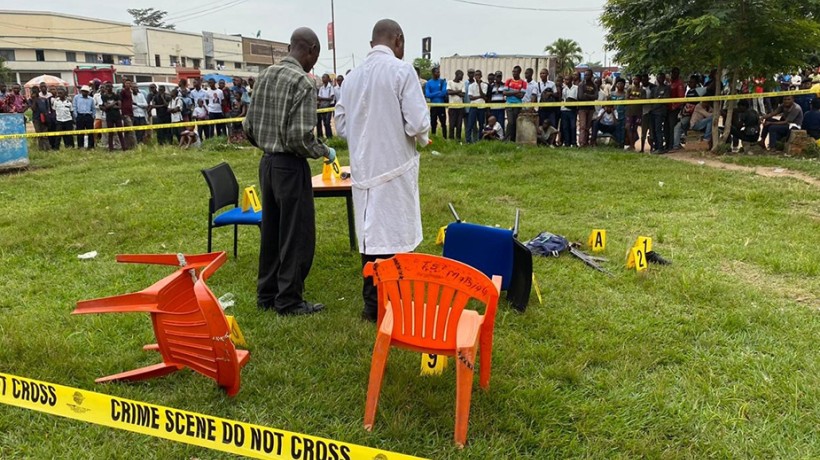
Investigators cordon off areas in Tshisuku to conduct forensic analyses and collect evidence, Kasai Central Province, DR Congo, June 2019. © MONUSCO/UN Joint Human Rights Office
The forensic work done by the Technical Assistance Team to support the investigations by the judicial authorities, particularly the mass grave exhumation process, is the first of its kind in the DR Congo. It has proven essential, given the lack of expertise in that domain in the DRC.
“The work focuses more on emblematic cases because we cannot document all the serious human rights violations that have taken place in the DRC. Based on the degree of gravity of the main violations and crimes committed, the military justice, in partnership with the UN Joint Human Rights Office, defines investigative priorities,” Tiem said. “But roughly speaking, the work of the Technical Assistance Team here could take several years.
“We hope that forensic work will provide the evidence that the authorities need for the investigations they are conducting here.”
Tiem expressed the wish to see all of judicial investigations supported by the team lead to trials, in particular through mobile courts, which would have an educational impact and informative value for the populations that have suffered in the region, as they could see justice being done.
“Advocacy must also be carried out with the goal of securing reparations for the victims,” he added.
